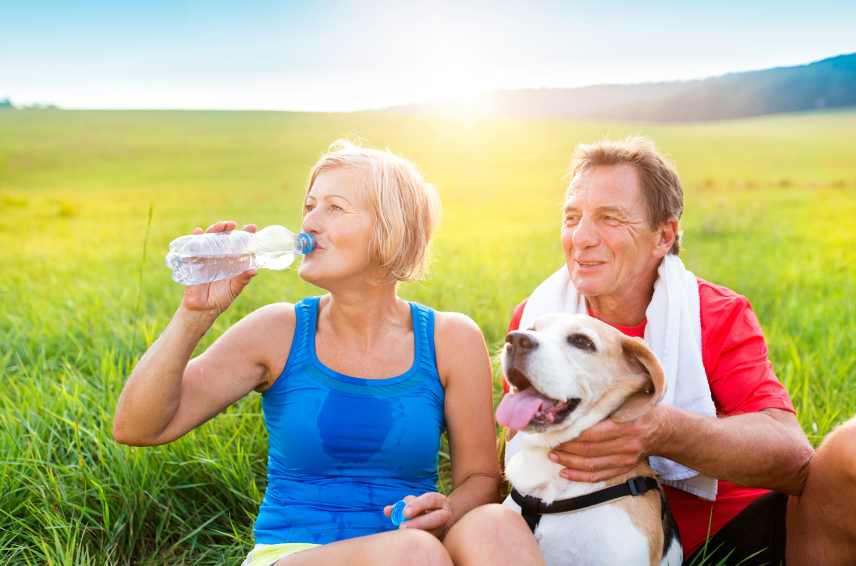For many pet owners, understanding their furry friend’s physiology is essential for their care and well-being. One common question that arises is whether dogs sweat like humans. The short answer is no, but the topic is more nuanced than a simple yes or no.
In this blog post, we’ll delve into the intricacies of canine perspiration, explaining why dogs don’t sweat like humans and how they regulate their body temperature instead.
Do Dogs Sweat?
Contrary to popular belief, dogs do sweat, but not in the same way humans do. Humans have sweat glands distributed across their bodies, which help regulate body temperature through evaporative cooling. On the other hand, dogs have sweat glands primarily located in their paw pads. These sweat glands, called merocrine glands, play a minimal role in thermoregulation compared to humans.

How Dogs Regulate Body Temperature:
Since sweating is not a primary mechanism for cooling in dogs, they rely on other methods to regulate their body temperature:
- Panting: Panting is the most effective way for dogs to cool down. When a dog pants, moisture evaporates from their tongue and the lining of their lungs, dissipating heat from their body.
- Vasodilation: Dogs can also regulate body temperature through vasodilation, a process where blood vessels near the skin’s surface dilate, allowing heat to dissipate more effectively.
- Seeking Shade: Dogs instinctively seek cooler areas, such as shaded spots or cooler indoor areas, when they feel overheated.
- Licking: Dogs may lick their fur to promote evaporative cooling, similar to sweating in humans, albeit less effective.
Why Dogs Sweat Less:
Several factors contribute to why dogs sweat less than humans:
- Fur: Dogs’ fur acts as insulation, trapping heat close to their bodies. While fur provides protection from cold temperatures, it can impede heat dissipation, making sweating less efficient.
- Evolutionary Adaptation: Unlike humans, who evolved as persistent hunters capable of long-distance running and endurance in hot climates, dogs evolved as sprinters with different cooling mechanisms.
- Efficiency of Other Cooling Mechanisms: Panting and vasodilation are highly effective at cooling dogs, making sweating less necessary for thermoregulation.
Health Considerations:
While dogs have evolved efficient mechanisms for cooling, pet owners should be mindful of potential heat-related issues, especially in hot climates or during strenuous exercise. Signs of heatstroke in dogs include excessive panting, drooling, lethargy, and vomiting. It’s crucial to provide ample shade and water and avoid strenuous activity during peak temperatures to prevent heat-related illnesses.
Conclusion:
In conclusion, while dogs do sweat, it’s not their primary method of cooling like it is for humans. It is essential for pet owners to understand how dogs regulate their body temperature to ensure their furry companions stay healthy and comfortable, especially during hot weather. By recognizing the unique mechanisms of canine perspiration and implementing appropriate measures, pet owners can help their dogs stay cool and happy year-round.

What to Do If Your Dog Is Sweating: Understanding Canine Perspiration
As a responsible pet owner, being attentive to your furry friend’s health and well-being is crucial. While dogs don’t sweat in the same way humans do, there are instances where they might exhibit signs of sweating or overheating. In this blog post, we’ll explore what sweating in dogs may look like, its potential causes, and, most importantly, what actions you should take if you notice your dog sweating.
Understanding Canine Perspiration:
As mentioned in our previous blog post, dogs primarily regulate their body temperature through panting, vasodilation, and seeking shade. However, they do have sweat glands, primarily located in their paw pads. While sweating is not their primary cooling mechanism, dogs may sweat minimally from their paw pads during times of extreme heat or stress.
Signs of Dog Sweating:
Identifying when your dog is sweating can be challenging since they don’t exhibit visible signs of sweating like humans. However, there are several indicators that your dog may be experiencing heat-related issues:
- Excessive Panting: If your dog is panting heavily, especially in conjunction with other symptoms, it may indicate overheating or stress.
- Drooling: Increased drooling can be a sign of discomfort or heat exhaustion in dogs.
- Lethargy: A noticeable decrease in energy levels or reluctance to engage in activity can signal that your dog is feeling overheated.
- Warm or Dry Nose and Paw Pads: While not definitive indicators, feeling your dog’s nose and paw pads for warmth or dryness can provide additional clues about their body temperature regulation.
What to Do If Your Dog Is Sweating:
If you suspect that your dog is sweating or experiencing heat-related issues, it’s essential to take prompt action to ensure their safety and well-being:
- Please move to a Cool Area: Immediately move your dog to a shaded or air-conditioned environment to help lower their body temperature.
- Offer Water: Give your dog access to fresh, cool water. You can also wet their paw pads or apply cool, damp towels to help them cool down.
- Avoid Strenuous Activity: Refrain from engaging in strenuous exercise or activities during hot weather to prevent overheating.
- Monitor Closely: Keep a close eye on your dog’s behavior and symptoms. If their condition doesn’t improve or worsens, seek veterinary attention immediately.
- Preventive Measures: Take preventive measures to avoid heat-related issues in the future, such as avoiding outdoor activities during the hottest parts of the day and providing ample shade and water.
Conclusion: While dogs don’t sweat in the same way humans do, they can still experience heat-related issues that require attention and care from pet owners. Understanding the signs of dog sweating and knowing how to respond appropriately can help ensure your furry companion stays safe and comfortable, especially during hot weather.
Remember, proactive measures and attentive care are essential for keeping your dog healthy and happy year-round.
References:
- American Kennel Club. How Dogs Sweat and How It Affects Their Cooling Process.
- ASPCA. Hot Weather Safety Tips.
- American Kennel Club. How Hot Is Too Hot? Heatstroke in Dogs
- PetMD. Heatstroke in Dogs.
